Tommy Armour 855s Silver Scot Irons
As much as I enjoy the ‘latest and greatest’ when it comes to golf equipment, I’m still a sucker for the classics. Specifically, the mid-to-late 90s hold a very sweet spot in my heart. Whether it’s clubs that were out of my reach back then, clubs I had and loved, or just clubs that capture that period in time perfectly, I love them. If there’s one club that perfectly captures 1995 to 2000 perfectly, it’s the Tommy Armour Silver Scot Irons. So many cool range rats had them in their bags. Well, I recently stumbled upon a used set Tommy Armour 855s irons (4-P) and my nostalgia wouldn’t let me pass them by.
The more popular club from Tommy Armour was the 845 irons. They were a compact cavity blade that looked behind the ball and had great feel. But, not unlike today, some players needed a little more forgiveness, but still wanted the looks and feel of the “better player club”. This is exactly who the Tommy Armour 855s Silver Scot irons were made for. With an oversized head and perimeter weighting enlarging the sweet spot, plus some offset, the 855s was a friendlier option than its 845 counterpart.
The Looks
For a somewhat game improvement (GI) iron, The Tommy Armour 855s Silver Scot irons have a fairly “bladey” cavity back look from address. The head is definitely on the larger size, but the top line is moderate and the soles are certainly thin by today’s standards. In fact, many of today’s muscle black blades will have thicker soles than these.
When you look at the cavity of the club, it screams 1995. These irons were so popular in the mid 90s that their look was one of the most imitated in the lucrative “knock-off brand” golf world. (Remember how entire golf stores thrived only selling knock off brand clubs?) A neat little, albeit pointless, touch is the alignment line on the rear “flange” similar to a putter. No idea what purpose it serves as you don’t see it at address, but a neat touch nonetheless! Another neat touch – notice the modeling of the “855s”. This was inspired by Porsche branding at the time.
How Does it Feel?
One of the goals with the Tommy Armour 8-series irons was to get the center of gravity (CG) in the same location for each club. As you can see in the cavities, the shapes and depths of the “pads” vary slightly throughout each club. This concept was being explored by Ping around the same time, and later in Callaway irons as well. But at the time of the 855s irons, not many people were doing it well. Now, will these feel like irons do today with similar concepts? Of course not, but they do feel pretty consistent throughout the set which was impressive at that time.
Additionally, the 855s irons were a cast stainless steel iron. I’d say they feel exactly how you should expect that to feel. The Tommy Armour 855s feels very solid and precise, but a bit slappy with some click to it. They definitely don’t have that smooth buttery forged feel. While the sweet spot is generous (for a mid-90s iron), the misses are plenty achievable and they are going to sting – especially with a firmer golf ball.
How Does it Sound?
Like the feel, the Tommy Armour 855s Silver Scot irons sound firm and a bit slappy. When you miss the sweet spot, it’s definitely on the rocky side. Cast cavity back irons just have a certain “poppiness” to them and the 855s is no exception. It’s certainly not bad, but it’s there to be aware of. I, personally, once again enjoy the nostalgia that comes rushing back when I hear a ball struck cleanly off the face.
On-Course Performance
In theory, the Tommy Armour 855s Silver Scot irons are designed to be easier to launch in the air and more forgiving. While they are likely easier to get up in the air than the 845, it’s all relative. I wouldn’t say the 855s has a super low CG that gets under the ball and makes it go up in the air easily by any means. The stock shot is a very comfortable mid-flight trajectory. I would even say the long irons even produce low, piercing laser beams. (PS. Those shots are tons of fun to hit with these clubs.)
I would say the 855s is a bit forgiving, but nowhere near as forgiving as today’s clubs of this category. But, if there’s one thing to say about the Tommy Armour 855s irons, they are workable. Although they have a good amount of offset to help with a straighter shot (or even a little draw), you can really shape the ball either direction and flight them up and down pretty easily. It’s an interesting reminder at how much more workable clubs in this category used to be.
Final Thoughts – Tommy Armour 855s Silver Scot Irons
So are the Tommy Armour 855s Silver Scot irons better than the clubs offered to us today? I suppose that’s somewhat subjective, but I don’t necessarily think so. They aren’t forged so they feel “just ok”. The players looking for the playability and profile of the 855s generally aren’t looking for the offset they provide. I think players seeking the forgiveness and enlarged sweet spot the 855s aims to offer will find much more benefit in modern alternatives.
But are the Tommy Armour 855s Silver Scot irons super fun to hit and a perfect snapshot in time? Absolutely. I had a ton of fun playing around with this unexpected find and reliving some childhood range sessions! All I needed was a Mr. Pibb from the fountain and a hot dog to cap it off.
Stock Tommy Armour 855s Silver Scot Irons Specs
| Club # | 1 | 2 | 3 | 4 | 5 | 6 | 7 | 8 | 9 | PW | GW | SW |
|---|---|---|---|---|---|---|---|---|---|---|---|---|
| Loft º | 16º | 18º | 21º | 24.5º | 28º | 32 | 36º | 40º | 44º | 48º | 52º | 56º |
| Lie º | 56.5º | 57.5º | 58.5º | 59.5º | 60º | 61º | 61.5º | 62º | 62.5º | 63º | 63º | 63.0º |
| Length | 40.25″ | 39.75″ | 39.25″ | 38.75″ | 38.25″ | 37.75″ | 37.25″ | 36.75″ | 36.25″ | 36″ | 36″ | 35.75″ |



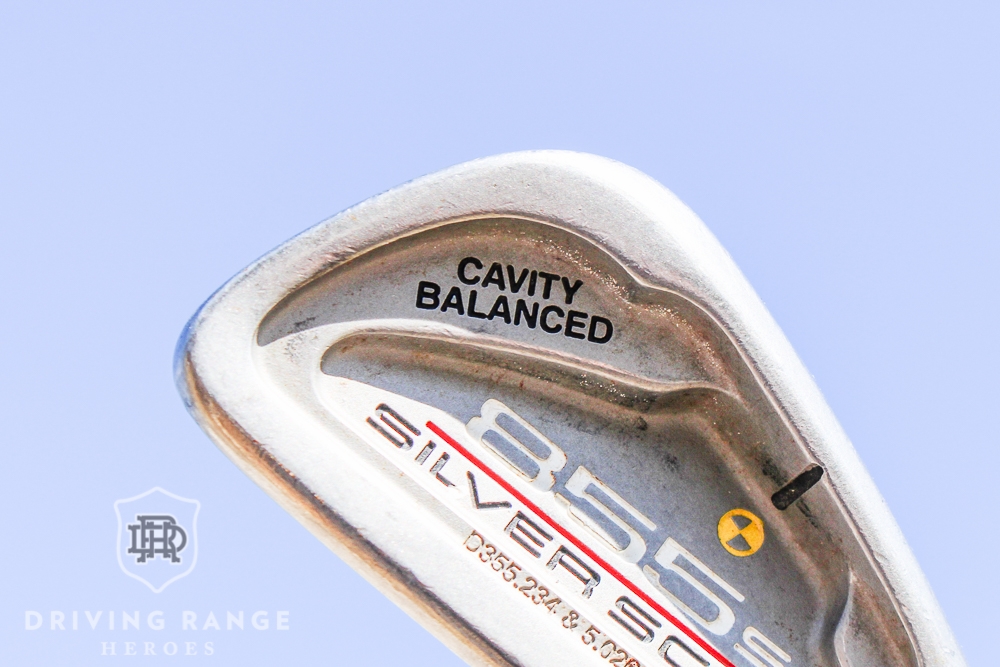







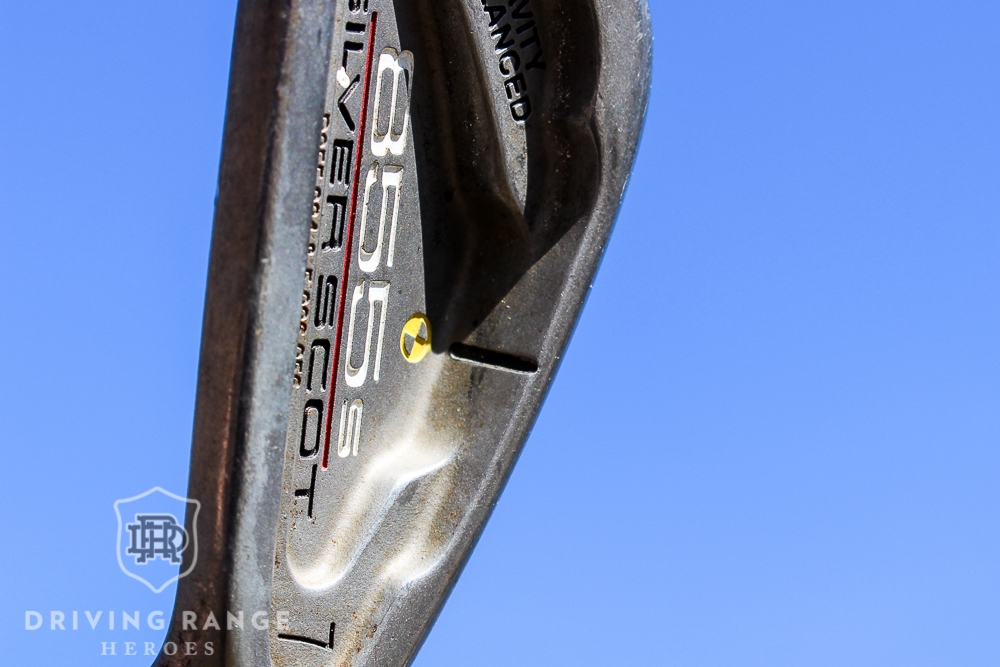

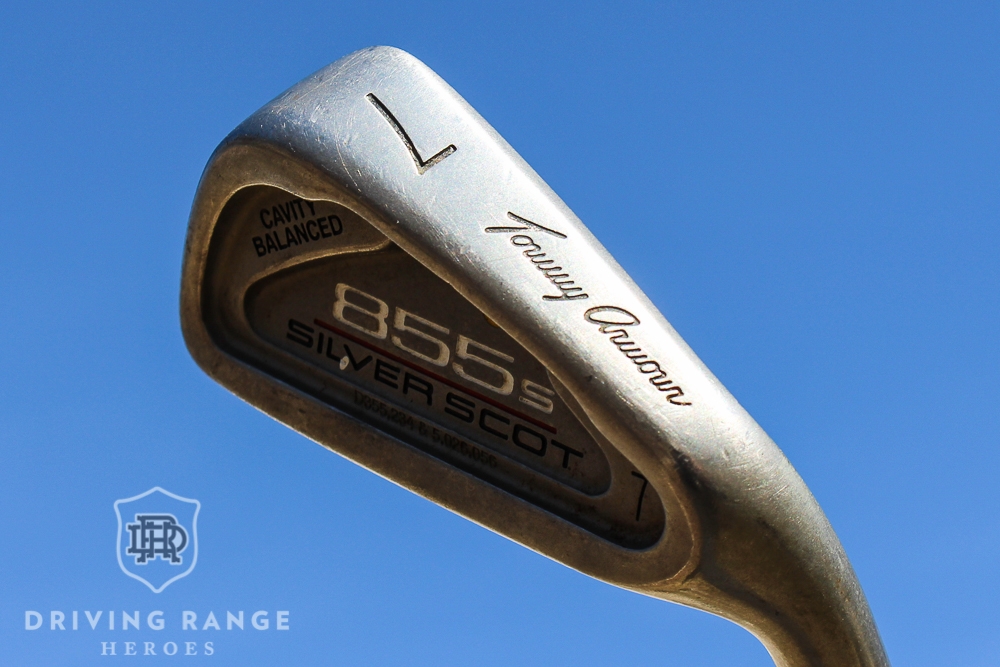

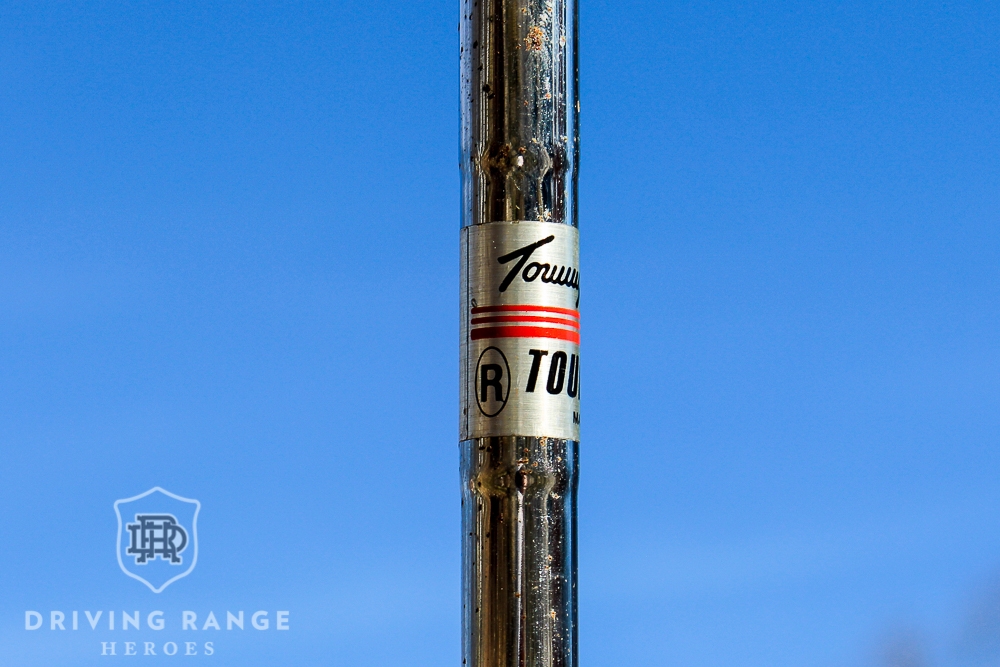




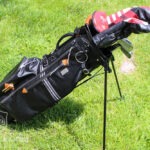












Dear Mr. Bush, hello Bill,
thank you for your article on the Tommy Armours Silver Scot 855s, I enjoyed reading it with great interest, as I am playing these myself.
I bought mine (4-pw), more by coincidence – not knowing much about them. They were sold second hand, in very good condition, for 30 € here in Finland. I bought them after my wife started playing my then brand new Callaway’s and due to the 855s playing qualities, I have no intention in going back to the Callaway’s.
I cleaned them up and replaced the grips. The fact their club heads are made of bare stainless steel, makes them easy to keep in good condition, since there is no coating that can take damage or starts corroding.
I can agree with everything you write about them, from the impact feeling over the ball flight to the shaping of shots. I think that they can match and compete with actual models quite well (comparing them to my former Mavrik’s and my sons Ping’s). The only disadvantage of the 855s is, they are not admitted for competition.
My clubs vary in 2 aspects from yours. First, mine unfortunately do not have the loft angle impressed on the toe of the club & second the little yellow “BMW” logo’s, above the alignment line on the rear “flange”, as you wrote, on mine are black.
A little research made me learn, that the 845s & 855s were made with and without offset. The yellow “BMW” logo indicates the club is an offset version and the black indicates the non offset model.
All the best & kind regards,
Carsten
My dad got these irons from a friend and had them in the garage when i decided i wanted to get into golf last year, having last played about ten years ago when i was in middle school. I agree with basically everything in this article having played them over the last 12 months, and I’m definitely not good enough to buy new clubs yet, so these have suited me just fine for now haha
I’ve been playing these 855S irons since 1996. Still in the bag. I haven’t found anything as good looking as them yet to replace them with and they wear so little. I’ve beaten many a player with much more newer and expensive irons. And everytime it drives them crazy. I’ll probably get new irons though as I’m getting older and need a lttle more forgiveness distance back. But these are classic and you can scores with these irons. Thanks for review they are well deserved.
I bought my 855s, very slightly used back in 1999 and haven’t looked back. Like Betta5, I haven’t found a set of new irons yet that would cause me to replace my Silver Scots. I love how they feel and how the ball comes out. They are so easy to clean up and I plan to play these irons well in to the future.
Would graphite shafts make a difference in making them feel more modern? I’m hoping to purchase a starter set for my 6’1” husband, who at age 61 has long threatened to retire and take up golf. An acquaintance has a set of 855 Silver Scot graphite shaft that’s a complete set minus the 7-iron for $75. They even have decent grips!
Would this be be a good starter set, or do you have a more modern recommendation? I started looking at. Strata (by Calloway) set, for example.
Thanks for any insights!
I don’t think graphite shafts would necessarily “modernize” them. For an affordable starter set, $75 is reasonable, but I would argue that with a little effort and/or ebaying, you can spend the same money and find something not missing a 7 iron.
I had a set of knock-off Burner Bubble shaft clubs that I was using and my dad wanted to try them, so we traded and I received two sets of the 855s (my dad always has a backup set in case of breakage). I was immediately hitting my irons straighter and fell in love with the steel shafts over the graphite. They have been my clubs ever since. My dad sold or gave away the other clubs.
Had a set of “five to nines” when they were launched and at that time head and shoulders the best and most consistent strike I ever achieved .
No coincidence had a great summer in club comps but late September lost entire set in a car theft.
Full no quibble replacement by insurers and Club Pro ordered identical spec – shaft / loft / lies grips etc.
When new set arrived bore no resemblance in terms of strike feel or distance – totally bizarre !
Replaced with Pings but to this day miss the first set of 855s.
Have a full set of 855s, 3-L2, all have Tommy Armour grips. Great to look at and to play. Due to an injured quadriceps tendon, I haven’t had the opportunity to play in a while, but am eagerly looking forward to doing so again.
At age 30 I bought this set new & now at age 58 I just went & had them re-shafted & gripped. I always say these were the best clubs ever made. & This may sound nuts but I typically only carry the 3, 5, 7, 9, S & gap. Adversely my 4, 6 & 8 are still like new ¯\_(ツ)_/¯
Jim – That is so funny. When I walk 9 holes I take the odd number irons out of the bag to make it lighter. For some reason I’ve always hit the even one better. Between us we have a almost new set.
Does anyone know what these clubs sold for brand new? I can’t seem to find out what the original price was in the 90s
I bought mine new in the 90’s with regular flex graphite shafts, 3-pw, added a 2 iron, SW and 60′ wedge. I wanted Ping’s but couldn’t afford them, but if I recall correctly, I still had over $600 in the 855’s by the time I added the other three, which was a lot of money back then. I continue to play them weekly though. Now in my 60’s I pulled the 2, 3, 4 out and replaced with a couple of M4 rescue hybrids to go with my M4 D, 3 and 5. I thought about getting new modern irons but from 160 in I continue to hit these 855’s too good to switch. Plus, they still look fantastic. IMHO they’re the best Vintage club out there that’s still playable. Pings of that era seem to be all worn out.
modern clubs are all marketing bs…they just renumber the iron sets 6 to utility wedge and gapwedge vs 3-pw.. if modern tec hnology is so great why dont the sets come with 3,4 and 5 irons (because no one can hit the jacked up lofts..marketing bs)
I think there are plenty of cases where the general sentiment is true, but there are definitely modern clubs more in line with traditional designs that have added benefits from newer tech and materials.
I read this article because I just got a complete set, 1-sw and a gap. These were the “catalog clubs” I couldn’t even think about ownin back then. I also have an unplayed NOS set if TaylorMade ICW 11s bein built for me right now. Currently playin a full set 1-sw Hogan Apex from about 85…gotta love the old clubs. How did any of us ever learn to play without all the electronic stuff and over engineered clubs???
I really enjoyed your article re: 855s.
Purchased my set in 2000 (new) at age 40 and still really like everything about the irons.
25 years later, I am getting to retire and play more golf.
I don’t seem to have the strength to power the clubs the way I once did.
My golfing buddies chuckle at the technology I am using and say it is time to get new irons.
Any recommendations?
Tough to say really. A lot of it totally depends on the specific player. Your best bet is to either get fit, or just go test everything you can and see which you hit the best and feels the best in your hands.
I’d recommend having your swing speed checked first. If you have steel shafts on 90’s clubs with a slow to moderate swing speed, I can see you having a strength issue with those clubs in your mid 60’s. That’s one reason I went with Graphite, they measured mine and recommended standard flex graphite even back then, my swing speed was never very high to begin with. Now in my mid 60’s they still hit well.